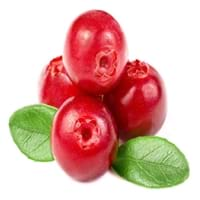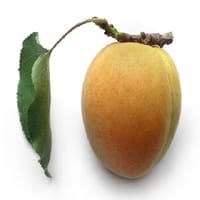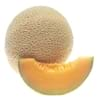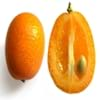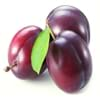Health Benefits
Cancer prevention, Heart care, Kidney stone treatment, Scurvy treatment, Ulcer prevention
Asthma treatment, Cancer prevention, Controls blood pressure, Digestive aid, Heart care, Maintains hormonal balance, Regulation of heart rate, Skin cleansing, Skin rejuvenation
General Benefits
Anti-inflammatory properties, Boosts immune system, Digestive aid, Fights against infections, Strengthens bones
Boosts immune system, Controls blood pressure, Digestive aid, Eye care, Maintains healthy cholesterol level, Strengthens bones
Skin Benefits
Anti-aging benefits, Reduces wrinkles, Skin rejuvenation, Treatment of acne
Hydrates skin, Reduces wrinkles, Treatment of dark spots, Treatment of skin diseases
Hair Benefits
Promotes longer and healthier hair, Protects hair, Treatment of dandruff
Good conditioner, Regulates hair growth, Rejuvenates scalp, Softening mask, Treatment of dandruff
Allergy Symptoms
Anaphylaxis, Breathing difficulty, Itching, Skin rash, Swelling of mouth, tongue or lips
Abdominal cramps, Anaphylaxis, Breathing difficulty, Diarrhea, Itching of mouth, Itching sensation in throat, Swelling of mouth, tongue or lips, Vomiting, Wheezing
Side Effects
Allergic reaction, Diarrhoea, Nausea, Stomach pain, Vomiting
Dizziness, Headache, Nausea, Vomiting
Best Time to Eat
Any time except an hour after meal, Don't consume at night and before bed
Best if taken as a breakfast (or empty stomach), As a snack in the late afternoon, Don't consume at night and before bed, Eat the fresh ones, avoid mixing with any other foods, don't eat after meal.
Vitamin B5 (Pantothenic Acid)
Vitamin C (Ascorbic Acid)
Vitamin K (Phyllochinone)
Phytosterol
Not Available
Calories in Fresh Fruit with Peel
Calories in Fresh Fruit without Peel
Not Available
Not Available
Calories in Frozen Form
Not Available
Varieties
Early Black, Howes, Ben Lear and Stevens
Gold Cot, Tilton, Wenatchee, Goldbar, Gold Kist, Tomcot, Harcot, Brittany Gold, Harglow, Hunza, Moorpark, Patterson and Royal Rosa
Color
Red
Orange, Yellowish-orange
Inside Color
White
Yellow
Taste
Bitter, Tart
Smooth, Sweet
Origin
North America
China
Soil Type
Clay, Sandy, Well-drained
Well-drained
Climatic Conditions
Warm
Dry, Hot
Facts about
- Europeans thought the cranberry blossom looked like the head of a sandhill crane, hence the name Cranberry.
- They are also known as bounce berries as they bounce when they ripe.
- Cranberries do not grow in water.
- 9 Jan is considered as the National Apricot Day.
- Apricots have been around for more than 4000 yrs.
- In latin, the meaning of apricot is 'precious'.
- 95% of apricots in the US are produced by California.
Top Producer
United States of America
Turkey
Other Countries
Azerbaijan, Belarus, Bulgaria, Canada, Latvia, Macedonia, NA, Romania, Tunisia, Ukraine
Algeria, Egypt, France, Iran, Italy, Morocco, Pakistan, Spain, Uzbekistan
Top Importer
Europe
United States of America
Top Exporter
United States of America
France
Botanical Name
Vaccinium Macrocarpon
Prunus armeniaca
Synonym
Oxycoccus macrocarpus
Not Available
Subkingdom
Tracheobionta
Tracheobionta
Division
Magnoliophyta
Magnoliophyta
Class
Magnoliopsida
Magnoliopsida
Subclass
Dillenhidae
Rosidae
Family
Ericaceae
Rosaceae
Species
Vaccinium macrocarpon
P. armeniaca
Difference Between Cranberry and Apricot
We might think that Cranberry and Apricot are similar with respect to nutritional value and health benefits. But the nutrient content of both fruits is different. Cranberry and Apricot Facts such as their taste, shape, color, and size are also distinct. The difference between Cranberry and Apricot is explained here.
The amount of calories in 100 gm of fresh Cranberry and Apricot with peel is 46.00 kcal and 48.00 kcal and the amount of calories without peel is Not Available and Not Available respectively. Thus, Cranberry and Apricot belong to Low Calorie Fruits and Low Calorie Fruits category.These fruits might or might not differ with respect to their scientific classification. The order of Cranberry and Apricot is Ericales and Rosales respectively. Cranberry belongs to Ericaceae family and Apricot belongs to Rosaceae family. Cranberry belongs to Vaccinium genus of Vaccinium macrocarpon species and Apricot belongs to Prunus genus of P. armeniaca species. Beings plants, both fruits belong to Plantae Kingdom.
